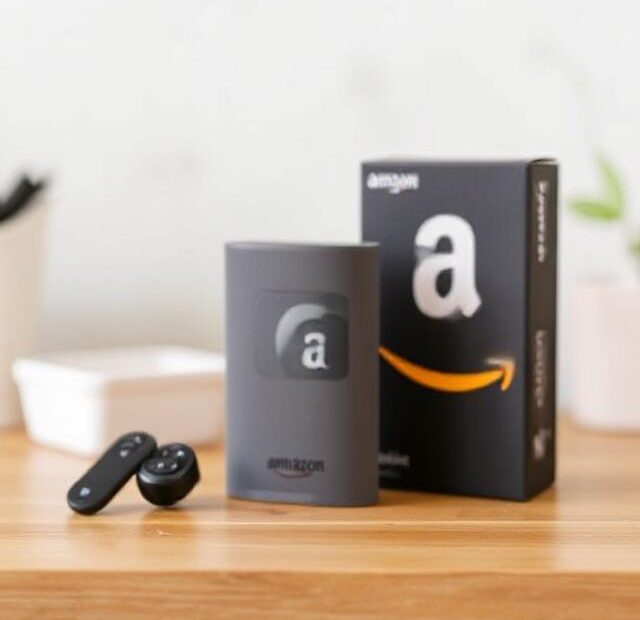In the competitive world of Amazon selling, standing out requires more than just great products—you need smart advertising strategies. One of the most effective methods for boosting visibility and sales is product targeting. As we head into 2025, the way sellers use this tool is evolving, and staying ahead means adapting to new best practices.
In this guide, we’ll explore Amazon product targeting tips for 2025 that will help you outsmart competitors, maximize ad spend, and win more sales.
1. Understand What Product Targeting Is
Product targeting allows you to display ads on specific product detail pages or within certain categories on Amazon. Instead of targeting keywords, you choose products or categories that are most relevant to your offering.
Benefits include:
-
Reaching shoppers already interested in similar items
-
Positioning your product against direct competitors
-
Boosting cross-sell and upsell opportunities
In 2025, product targeting is more data-driven than ever, meaning success depends on both strategy and analytics.
2. Analyze Competitor Pages Before Targeting
Blindly targeting competitor listings can waste your budget. Instead, analyze competitor detail pages for:
-
Price comparison – Is your product priced competitively?
-
Reviews and ratings – Products with poor ratings are great to target.
-
Content quality – Weak listings make it easier for your ad to attract clicks.
Tools like Helium 10, Jungle Scout, or DataHawk can help you evaluate competitors and identify high-potential targets.
3. Leverage Category Targeting Strategically
Category targeting casts a wider net than targeting specific products, but it requires fine-tuning to avoid irrelevant clicks.
Pro tips:
-
Narrow down with refinements such as price range, review ratings, and Prime eligibility
-
Target subcategories instead of broad top-level categories for better relevance
-
Use it for discovery campaigns, then refine with ASIN targeting once you find winners
4. Target Your Own Products for Cross-Selling
One overlooked Amazon product targeting tip for 2025 is targeting your own listings. This can:
-
Encourage customers to buy complementary products
-
Prevent competitors from stealing your shoppers with ads on your own pages
-
Increase average order value through bundling
For example, if you sell a coffee maker, target it with ads for your coffee beans or accessories.
5. Use Sponsored Display for Retargeting
In 2025, Sponsored Display ads are more powerful than ever, enabling you to retarget shoppers who viewed your product but didn’t purchase.
Why it works:
-
Keeps your product top of mind
-
Increases conversion rates from warm leads
-
Can be used for both competitor and own-product targeting
Pair retargeting with limited-time discounts to push hesitant buyers over the edge.
6. Optimize Bids Based on Performance Data
Don’t set your bids and forget them. Monitor click-through rate (CTR), conversion rate (CVR), and Advertising Cost of Sales (ACoS) regularly.
Bidding strategy tips:
-
Increase bids on high-performing ASINs to gain more visibility
-
Lower bids on low-converting placements to protect ROI
-
Use Amazon’s “Dynamic Bids – Up and Down” for competitive situations
7. Create Compelling Ad Creative
Even with perfect targeting, poor ad creative can ruin your results. Your product listing should be fully optimized before launching product targeting campaigns.
Ensure you have:
-
High-resolution images from multiple angles
-
Keyword-rich and benefit-focused titles
-
Persuasive bullet points
-
A+ Content with lifestyle images and comparison charts
The more attractive your product page, the higher your conversion rate.
8. Test and Rotate Targeted ASINs
Successful product targeting isn’t about setting up a few targets and leaving them forever. Instead, run tests to find the most profitable placements.
How to test effectively:
-
Start with a mix of competitor, complementary, and own ASINs
-
Review performance weekly
-
Replace underperforming ASINs with new targets
This keeps your campaigns fresh and aligned with market trends.
9. Combine Product and Keyword Targeting
While product targeting is powerful, it works even better when paired with keyword targeting campaigns. Together, they cover multiple touchpoints in the buyer journey.
Example strategy:
-
Use keyword targeting to capture shoppers actively searching for your product type
-
Use product targeting to convert those still comparing options on detail pages
10. Stay Ahead of Amazon’s Algorithm Changes
Amazon continually updates its advertising algorithms, affecting placement visibility, bidding, and targeting efficiency. To stay competitive in 2025:
-
Follow Amazon Ads official updates and webinars
-
Join seller forums and communities for shared insights
-
Test new ad features as soon as they launch
Early adoption of new tools can give you a temporary competitive edge.
Final Thoughts
Mastering Amazon product targeting tips for 2025 isn’t just about selecting the right ASINs—it’s about combining data-driven analysis, competitive strategy, and optimized creatives.
By targeting competitor weaknesses, leveraging your own listings, refining categories, and continuously optimizing bids, you can make product targeting one of your most profitable Amazon PPC strategies.
In a marketplace as competitive as Amazon, the sellers who adapt fastest to advertising changes are the ones who win big.
Also, you can learn more about Amazon Ads here.
